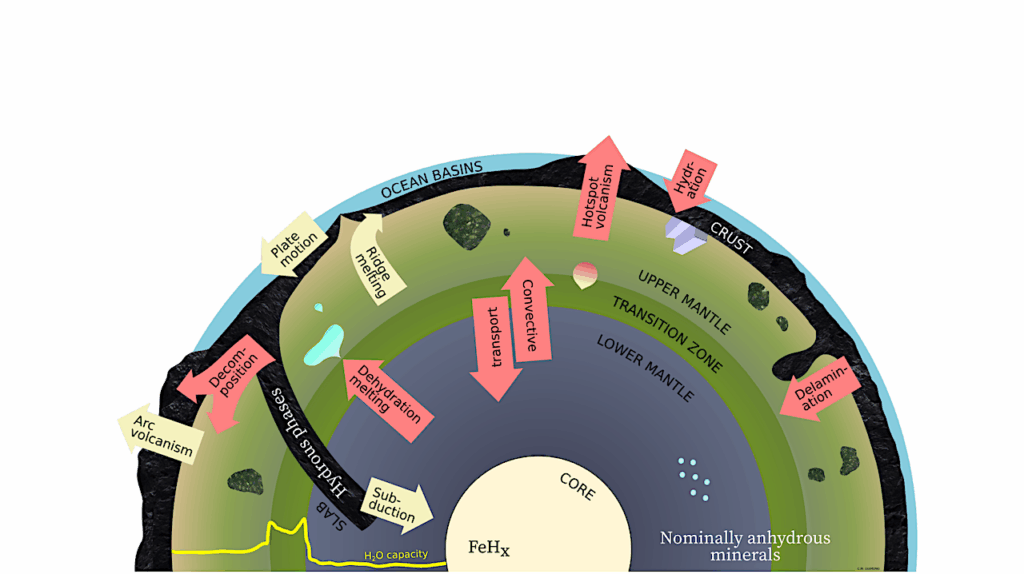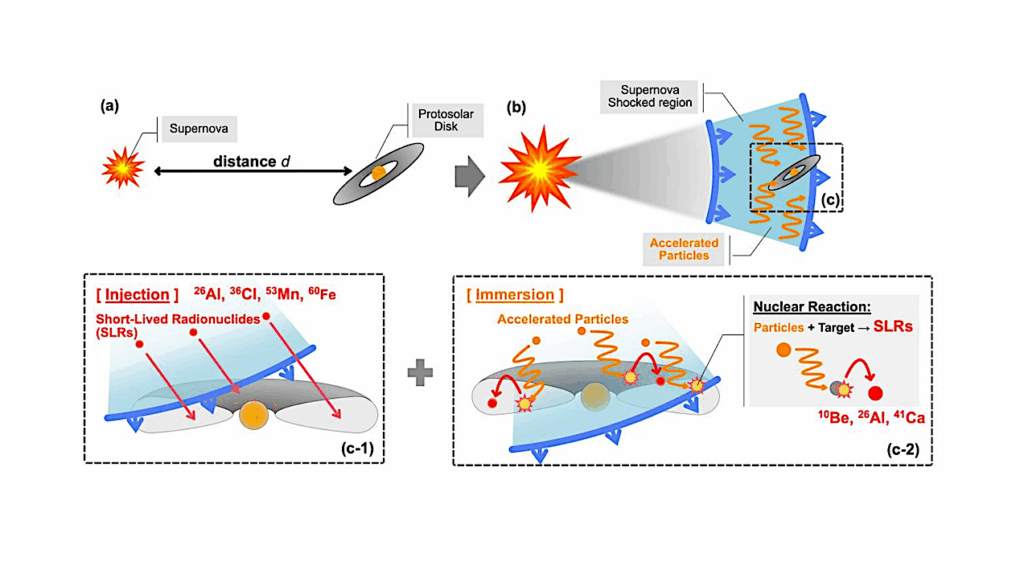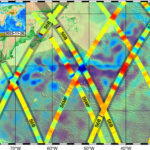Now Reading: Zooming Into The Water Snowline: High Resolution Water Observations of the HL Tau disk
-
01
Zooming Into The Water Snowline: High Resolution Water Observations of the HL Tau disk
Zooming Into The Water Snowline: High Resolution Water Observations of the HL Tau disk
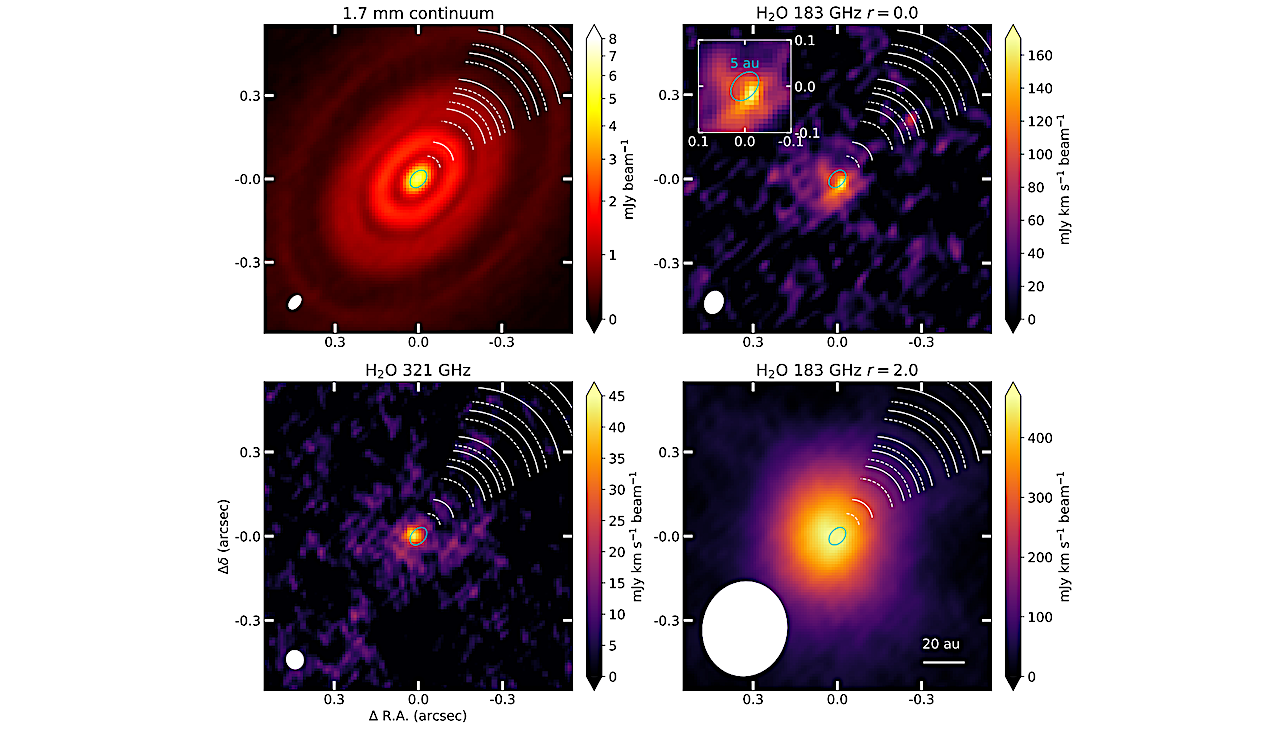
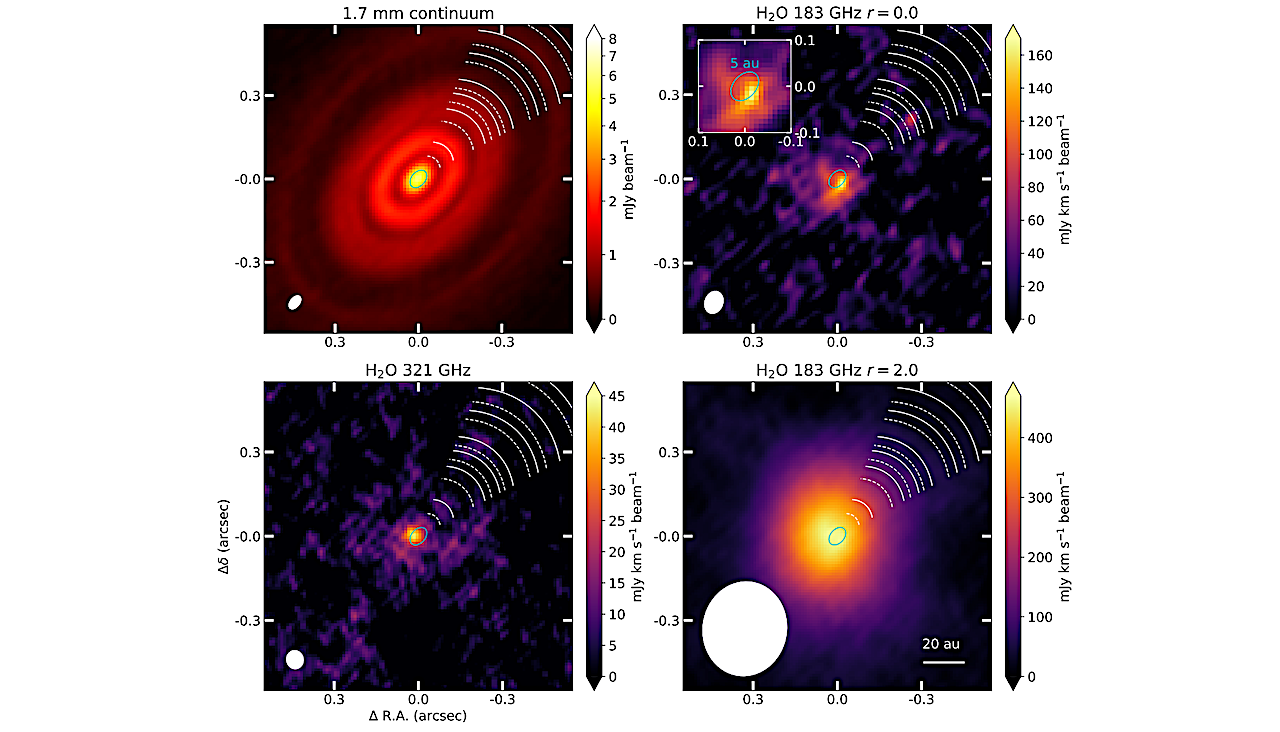
ALMA Band 5 images of the HL Tau disk and the 321 GHz H2O line. The continuum (top left) and the JvM-corrected integrated intensity maps of the H2O line at 183 GHz imaged with r = 0.0 (top right) and r = 2.0 (bottom right) providing high and moderate spatial resolution. The inset in the top right panel presents a zoom of the inner 0′′ .2 and highlights the approximate water snowline location derived by Guerra-Alvarado et al. (2024) The bottom left image is the reimaged H2O 321 GHz line originally presented in Facchini et al. (2024). The beams are indicated in the bottom left corners of the respective panels. The dust rings and gaps derived from high resolution ALMA observations are indicated with solid and dashed arcs in each panel (ALMA Partnership et al. 2015; Carrasco-González et al. 2019; Guerra-Alvarado et al. 2024) and a 20 au scalebar is shown in the bottom right corner of the bottom right panel. –astro-ph.EP
Water is one of the central molecules for the formation and habitability of planets. In particular, the region where water freezes-out, the water snowline, could be a favorable location to form planets in protoplanetary disks.
We use high resolution ALMA observations to spatially resolve H2O, H13CO+ and SO emission in the HL Tau disk. A rotational diagram analysis is used to characterize the water reservoir seen with ALMA and compare this to the reservoir visible at mid- and far-IR wavelengths.
We find that the H2O 183 GHz line has a compact central component and a diffuse component that is seen out to ~75 au. A radially resolved rotational diagram shows that the excitation temperature of the water is ~350 K independent of radius.
The steep drop in the water brightness temperature outside the central beam of the observations where the emission is optically thick is consistent with the water snowline being located inside the central beam (≲6 au) at the height probed by the observations.
Comparing the ALMA lines to those seen at shorter wavelengths shows that only 0.02%-2% of the water reservoir is visible at mid- and far-IR wavelengths, respectively, due to optically thick dust hiding the emission whereas 35-70% is visible with ALMA. An anti-correlation between the H2O and H13CO+ emission is found but this is likely caused by optically thick dust hiding the H13CO+ emission in the disk center.
Finally, we see SO emission tracing the disk and for the first time in SO a molecular outflow and the infalling streamer out to ~2″. The velocity structure hints at a possible connection between the SO and the H2O emission. Spatially resolved observations of H2O lines at (sub-)mm wavelengths provide valuable constraints on the location of the water snowline, while probing the bulk of the gas-phase reservoirs.
M. Leemker, S. Facchini, P. Curone, L. Rampinelli, M. Benisty, A. Garufi, E. Humphreys
Comments: Accepted for publication in A&A
Subjects: Earth and Planetary Astrophysics (astro-ph.EP)
Cite as: arXiv:2511.16737 [astro-ph.EP](or arXiv:2511.16737v1 [astro-ph.EP] for this version)
https://doi.org/10.48550/arXiv.2511.16737
Focus to learn more
Submission history
From: Margot Leemker
[v1] Thu, 20 Nov 2025 19:00:03 UTC (7,812 KB)
https://arxiv.org/abs/2511.16737
Astrobiology,
Stay Informed With the Latest & Most Important News
-
 012024 in Review: Highlights from NASA in Silicon Valley
012024 in Review: Highlights from NASA in Silicon Valley -
 02Panasonic Leica Summilux DG 15mm f/1.7 ASPH review
02Panasonic Leica Summilux DG 15mm f/1.7 ASPH review -
 03From Polymerization-Enabled Folding and Assembly to Chemical Evolution: Key Processes for Emergence of Functional Polymers in the Origin of Life
03From Polymerization-Enabled Folding and Assembly to Chemical Evolution: Key Processes for Emergence of Functional Polymers in the Origin of Life -
 04How New NASA, India Earth Satellite NISAR Will See Earth
04How New NASA, India Earth Satellite NISAR Will See Earth -
 05And Thus Begins A New Year For Life On Earth
05And Thus Begins A New Year For Life On Earth -
 06Astronomy Activation Ambassadors: A New Era
06Astronomy Activation Ambassadors: A New Era -
07SpaceX launch surge helps set new global launch record in 2024












